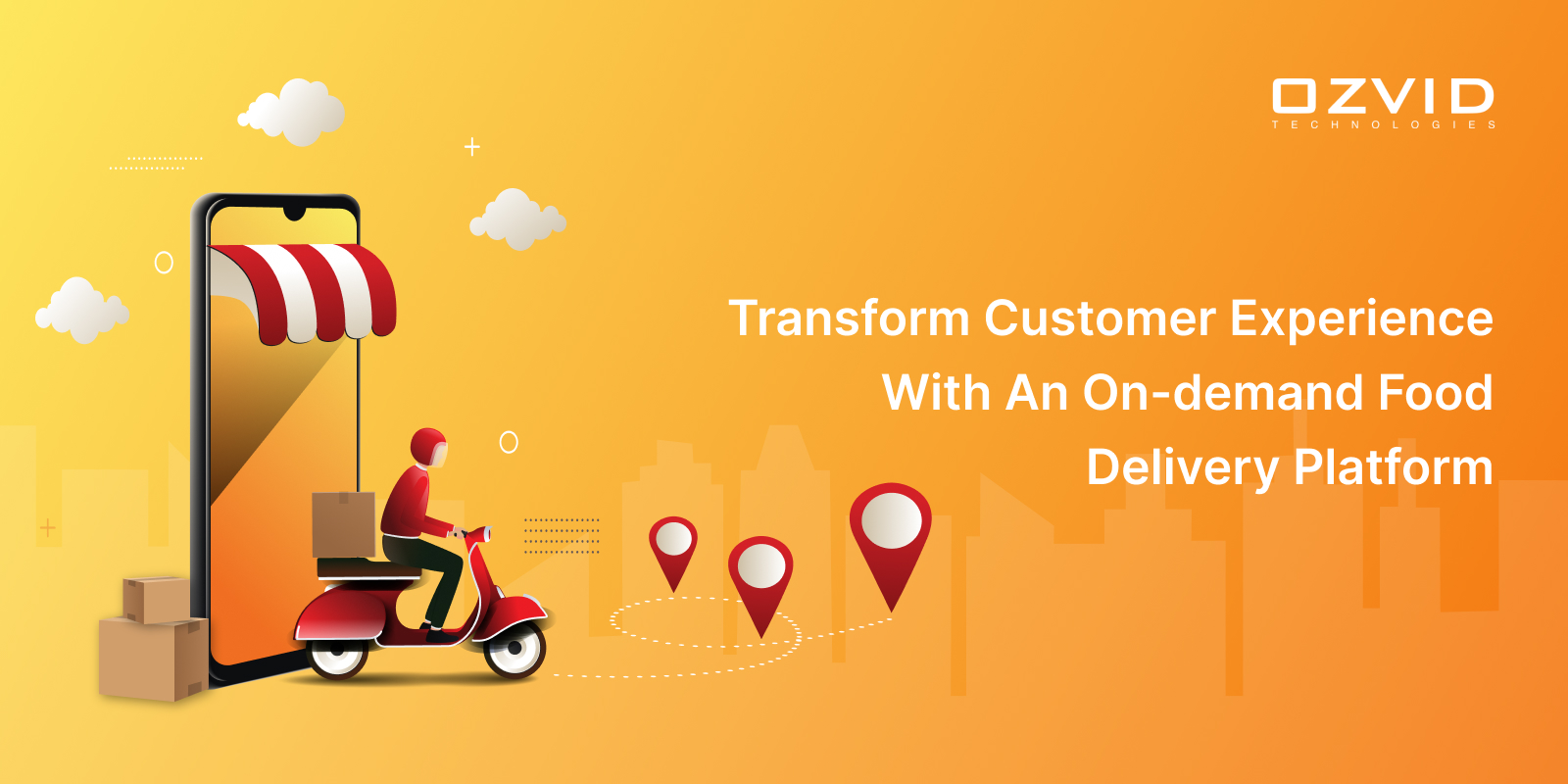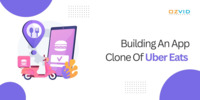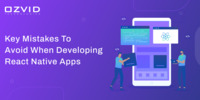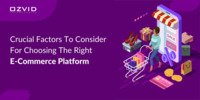- Mar 13, 2024
- Mobile App Development
- 36267
Share this post on:

Satisfying the cravings is the ultimate need of a human, no matter how rich or poor. The mode and type may differ, but its demand remains the same.
When we talk about youngsters and millennials, they are so involved in eating outside that they rarely prefer home-cooked meals. But do you like to go out of your comfort zone to satisfy your food cravings?
Of course not, but with the on-demand delivery applications, there is a drastic change in consumer behavior and the restaurant industry.
Yes, we are talking about the trending food delivery applications that have made food deliveries an effortless and hassle-free task.
Leveraging technology benefits restaurant businesses and continue to evolve. Modern consumers are least interested in cooking, so food ordering has become an everyday trend. Isn’t it like a dream come true? Order food from your favorite restaurants, get it delivered within minutes and eat while enjoying your favorite movie or a Netflix series. Of course, it is!
How digital technology affects Food Delivery Industry?
If we talk about the conventional food delivery model, customers used to find the contact number of restaurants, call them and ask for the menu and wait to get their order delivered, and then make payment to the delivery guy.
But with technological evolution, things got a lot easier. The on-demand applications rapidly transformed the food delivery industry. Consumers can now instantly order meals from their favorite restaurant, check out the digital menu, make payments online, apply coupons and discounts, and more. Modern solutions offer flexibility and feasibility to the users.
For a restaurant to retain its customers, opt for digital solutions such as a food-ordering mobile app. It eases the food delivery process and brings more visibility to your restaurant, more customers, and ultimately the ROI.
The number of people ordering food grew from 1.32 billion in 2014 to 2.05 billion in 2020. The food delivery platforms have reached high valuations, and there are 338 food delivery businesses with funding of $5 million in the US.
Online food delivery platforms deliver cooked food or fresh items to the doorsteps. The trend of grocery and food items became quite popular during the pandemic. On-demand food delivery is the future of the food delivery industry.
The growing demand for Food Delivery Systems
The demand of consumers exponentially shifted to the online business model, and the traditional options just vanished. Digital platforms and online food ordering apps open the door to opportunities for restaurants.
A few topmost platforms like Deliveroo and Postmates have already touched heights. And the downloads indicate that the food delivery model services are not stopping anytime soon.
Many startups have begun to invest in the food delivery app market and have gained quite an appreciation from users and investors. They tend to add unique and customized features and make their names in a few years.
The conventional way of food delivery was challenging, and people had to place orders on call. The delivery model was in existence for a long time. But slowly and steadily, digital technology took over, and on-demand applications started offering products/services at customers' doorsteps. These days, with a single tap from mobile phones, users can place orders and enjoy their favorite meals.
In this article we will discuss the future food delivery industry, comparing and discussing the most prominent business models. Let us start and explore them all!
Challenges in the food delivery app business
With the growth in the market, many competitors are entering the food business. And food delivery businesses are constantly attracting new customers every day. This has made the market a competitive and challenging place for businesses. Here are a few challenges that food app delivery businesses face.
- Unstable customer base
- Unstable prices
- Inconsistent food quality
- Market demand
- Market share
Let us explain all the challenges in detail.
Unstable customer base: Customers in the food delivery businesses are constantly changing. The main goal of food delivery is to get great food at the best prices with less hassle. All the food businesses offer services at great prices, and customers are taking advantage of all of them.
According to a report given by CleverTop, 86% of users stop using food delivery apps within the first two weeks. It has made the customer base unstable. Also, it is hard for the food business to have a loyal customer base.
Unstable prices: With a varying customer base, prices vary a lot. The prices keep fluctuating due to many factors associated with the food industry. With that, food businesses can not track effective costs and face price-related issues.
Additionally, businesses sometimes have to deal with offensive and defensive price models to keep up with their competitors.
Inconsistent food quality: One of the most challenging tasks in front of the food delivery businesses is food quality. There is a lot of difference between the food served on the table and the delivered food. All food businesses try to offer the highest quality food to their doorsteps. With the growth in technology, it has become possible for food businesses to deliver food. But with that, there is a need for improvement.
Market demand: The market is growing, and the demand for high-quality food delivery is increasing. With this, there is another side that consists of maintenance of the supply and availability. It is a must for businesses to satisfy the needs of customers. And customer satisfaction does not only depend on delivery partners but also on the restaurant owners who handle the whole process of the food on the backend. So it is crucial to maintain a balance between the delivery partners and restaurant owners.
Market share: The market consists of several business players who are striving hard to grab customers' attention. All the businesses are thriving hard to attract potential customers and trying to maintain the customer base. But all these new businesses are struggling to establish themselves in the market, as there are already old businesses that have captured the market and are thriving. It is not easy to win the food market for new businesses, as they have to compete with an already established market.
Business models that organizations adopt
1. Aggregators
In the aggregator model, different restaurants are under one roof. Let us take the example of Zomato. Here, users can find a list of restaurants under a single platform. The consumers can order food, and agents deliver it to their doorsteps.
Aggregator platforms are popular and act as a mediator for restaurants and consumers. You can order food from your favorite restaurant and cuisine via your smartphone. The platforms streamline the communication between the restaurant and the user. It offers customer support and a delivery agent for every order placed. The aggregator platform owner can earn a commission from the restaurant for every order the user places.
The aggregator platform has a simple functioning. The user sign-in for the platform and use the search filters to find their favorite cuisine or restaurant. They can compare the prices with other restaurants, check for customer reviews, and place the order with satisfaction. After order confirmation, the aggregator passes the order to the restaurant. Aggregator makes the food delivery and has a fixed fee on orders.
Also Read: Things You Must Consider While Developing an On-demand Food Delivery App
2. New Delivery
The business model is similar to aggregator ones and has gained popularity. Users can compare different restaurant menus. The only difference is in the logistics i.e. it provides logistics to the restaurants who partner with them.
For restaurants that have just started their journey and have no experience in food delivery, the logistic services come to the rescue. Restaurants can leverage the benefits of these services and can enhance their customer base. The restaurants can conveniently deliver the food to the customers without worrying about the driver and commute. The restaurants, therefore, get free time to manage their customer service and improve the quality of services.
The food delivery partner charges a fee from both the customer and the restaurant. Deliveroo is one such platform that offers these services worldwide.
3. Full-service On-demand delivery
Whether you are a startup or have a reputed chain of businesses, everyone tries to offer healthy food delivered to the customer's doorsteps. There is no third party or aggregator involved in the full-service delivery model. The meal is prepared in the restaurant and then delivered to the customer with the help of food-delivery agents.
Dominos and Munchery are a few well-known names when it comes to full-service on-demand food delivery services. You can order the meal at the restaurant with their daily menu and wait for the delivery guy to make the delivery.
Food Ordering is easy in this model, with each dish on a menu consisting of a picture and a list of ingredients. Customers check for reviews before placing an order.
Market Trends and Scopes
The aggregator model allows your business to flourish without spending much. But, setting up a business is a challenging task due to the high competition.
With the new delivery model, businesses need funds because there is more investment. So for startups, it could be challenging. Moreover, you may have to add different certifications and insurance to comply with the policies.
The new delivery business model is getting traction, and more restaurants will start depending on the model to offer services to customers at affordable prices. It provides a plethora of advantages and helps to increase the client base for the restaurant. The overall result could be better with the new delivery business model.
How to build a successful on-demand food-delivery app?
Restaurants must have a clear idea of the food-delivery app that they are planning to develop. And they must be able to explain the mobile app development process to the developers. There are a few points that need to be considered in app development. They are app quality, navigation, performance, user experience, user interface, app life-cycle, user bandwidth, ease of use, app crash logs, etc.
Food-delivery app consists of the following steps:
- Ideation
- Creating an interface design
- Developing an MVP
- Execution and Tests
- Product Deployment
- Product Distribution
Solution for the food delivery app industry
There are a lot of challenges that the food industry is facing, and to perform better in the market, they need solutions to solve the issues.
Here are a few solutions for food delivery apps:
- The Customer Relationship Management Software Programs help you maintain a healthy relationship with all the customers.
- Right marketing help businesses understand the problem and can impact the satisfaction of the customer base.
- Proper management of resources solves most business problems. Good management offers many benefits to businesses by improving their efficiency and effectiveness. Also, responsible and good management is directly proportional to customer satisfaction.
- Businesses that maintain customer-friendliness are responsive and offer great support win the race in the market. Such businesses are prone to get high support from their customers as the customers can visit the platform again.
Winding-up!
On-demand food delivery solutions continue to show steady growth in years to come and offer convenience and accessibility to users.
Also, there are so many new business models that continue to dominate the food delivery market.
Are you looking for app development experts to fulfill your business objectives and reach your goals? OZVID Technologies, offering app development solutions for over a decade while ensuring your business generates maximum profits.











